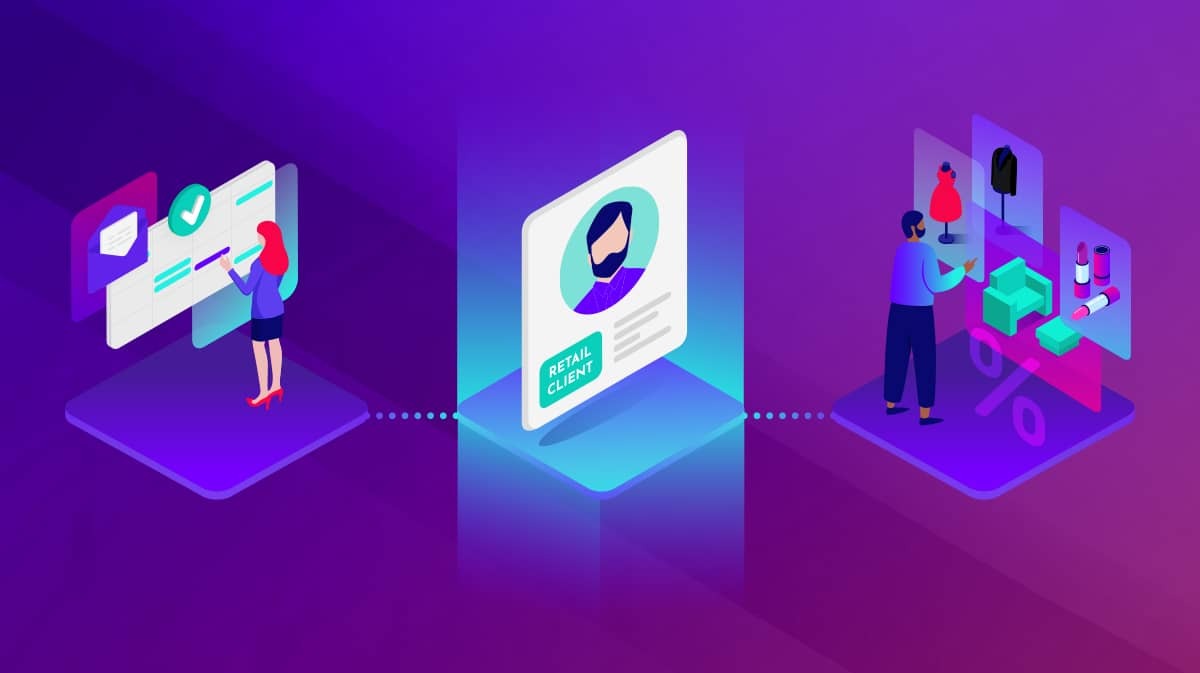Looking ahead, we know nothing will be the same. The way we work, the way we celebrate, the way we connect with others, the way we communicate … it will all be different. It already is.
This is true for businesses across every industry as well. Over the past year, consumer behavior has drastically shifted. One of the most impactful changes across every industry was the rapid acceleration of digital transformation. And while the move towards digitalization across all industries certainly preceded the pandemic, some say the digital transformation we experienced in the last year is equal to 10 years’ worth. This created an extremely competitive environment, and the need to adapt and embrace digital strategies was crucial to surviving. Now that many consumers are accustomed to new digital technologies and offerings, but also still want in-person, human-to-human connection, it’s time to prepare for what’s next!
It’s time to look to the future and continue to adapt to meet consumer expectations for long-term success.
Changes in consumer behavior
While consumer behavior is always changing, there’s no denying that the past year has changed consumer behavior in ways no one could have predicted. Consumers have been empowered to shop on their terms, bank on their terms, and do business with you on their terms. When customers could not physically be in stores or branches, online shopping and digital banking provided safety and convenience.
Today’s consumer and the future consumer wants their experience to be personalized, memorable, and convenient. With this, there has been a shift in where they do business and how they do business. Let’s take at what’s changed:
73% of U.S. consumers have changed stores, brands, or the way they shop.
43% of consumers say they are willing to spend more on convenience in the future.
Customers have rated personalization as the number one driver for customer loyalty.
There is a lot to consider across industries when finding new and innovative ways to be successful in the future. Retailers and financial institutions will need to continue to adapt their strategies to exceed customer expectations:
Retailers: A focus on experiential retail and an omnichannel approach
Ecommerce was certainly prevalent and crucial, pre-pandemic. However, the sudden shift to online and curbside services had retailers quickly adapting their brick-and-mortar locations to curbside fulfillment centers and optimizing their online presence to increase sales. With more than 150 million new shoppers that migrated online in the past year, and 79% indicating they plan to continue shopping online, having a robust online presence is a must. But, there are still many consumers who prefer shopping in-store. From curbside pickup and click and collect to virtual shopping and fitting appointments, the pandemic has forever changed the retail landscape:
More than 90% of all in-store purchases are first researched online.
40% of U.S. consumers are becoming more mindful of where they spend money.
Globally, 49% of consumers shop online more now than they did pre-COVID.
63% of consumers would prefer to pre-book an appointment to secure a time to meet with a staff member, and 57% of consumers say they are more likely to book an appointment than they were prior to the pandemic.
75% of shoppers completed an in-store or curbside pickup in the past six months with 22% completing 11 or more.
It’s been competitive, and there’s no denying that with changes in consumer shopping habits, it’s going to be even more competitive. Here are some things retailers can do to stand out from the crowd:
Embrace an omnichannel approach. This has never been more crucial for retailers. Consumers are using a mixture of traditional online and in-store shopping and are eagerly taking advantage of new technologies that enable them to tailor their remote and in-person shopping experience to their exact needs. That could mean purchasing online and picking up curbside. That could mean browsing in a store then ordering online for delivery. That could mean booking an in-person appointment and then making additional purchases online. Each customer shopping journey is unique, and you need to find ways to not only accommodate these journeys, but make them exceptional.
Reimagine your brick-and-mortar stores as experiential hubs. Look to create flagship stores that aren’t only a point of sale, but provide immersive shopping experiences that increase brand loyalty. Be innovative, and create something memorable. Some shoppers want to research and explore products in stores, but buy online. Make your brand stand out from the rest.
Personalize the customer journey at scale. How can you meet the needs of all of your shoppers? How can you ensure that they are having engaging, consistent experiences across all channels? Your online shoppers, your in-store shoppers, your curbside pickup shoppers, your hybrid consumers who do a mix of it all - it’s about finding ways to meet the needs of all of these different shoppers in a manner that is personalized to them. You must embrace and invest in the right technology to do this at scale, including prioritizing one-to-one personalized remote and in-store appointments.
Financial institutions: A focus on bank from anywhere and humanizing digital banking
The past year was no easy feat for banks and credit unions. Even with mobile and digital banking already in place, in 2020, customers shifted to online and mobile banking in record numbers - even in regions where previously cash had been the go-to. Between legacy systems and an exponential increase in the need for digital, many financial institutions had to adapt quickly to continue serving their customers to the level they were used to across physical branch locations. In a recent Deloitte survey, almost 80% of respondents from top financial institutions stated that COVID-19 uncovered shortcomings in their digital capabilities.
There is a true shift to banking from anywhere, as customers have adapted to mobile banking and virtual banking appointments when they couldn’t walk into branches. They want personalized, positive experiences that have a human touch. And while there has definitely been a trend toward digital, people still want in-person interactions when receiving financial advice. When it comes to banking, people are embracing more digital options, but are also looking for positive experiences:
44% of retail banking customers said they are using their primary bank’s mobile app more often.
One out of every ten people is considering switching their primary financial institutions within a year and open new accounts to meet the financial essentials and align with the values in their lives.
75% of customers say that positive experiences influence purchasing decisions in banking.
Banks, credit unions, and other financial institutions should focus on new customer engagement strategies to improve customer satisfaction:
Provide options and convenience through omnichannel banking. Look to enable banking from anywhere. Consider new innovative ways to connect with the hybrid, omnichannel consumer, such as virtual banking branches. If you can provide more ways to bank, and more expertise to meet the needs of your customers, you will remain competitive.
Upgrade and invest in technology to propel your digital strategy moving forward. To remain competitive and to give the highest level of customer service, you need to exceed customer expectations across all types of banking experiences (both in-person and digitally). From appointment scheduling to give your customers and members the one-to-one connections they crave to virtual queuing to ease customer frustrations of waiting in a physical line, having the right technology in place to meet and exceed customer expectations is key.
Humanize your banking services. Find a way to connect with customers and members on a human level to build emotional connections. Money is personal, and you need to be empathetic and build deeper relationships with your customers if you want to improve customer loyalty and lifetime value. Banking on empathy matters.
Personalize your experiences at scale with an XRM strategy
Things have changed, and they will continue to change. As more consumers want to shop and bank when, how, and where they want - but still expect exceptional customer service and unique experiences, it can be hard to keep up! At JRNI, we’re here to help you ramp up your XRM strategy to remain competitive in the current landscape and beyond! Our experiential relationship management (XRM) platform helps top retailers and financial institutions personalize experiences at scale through in-person and remote appointments, virtual queuing, and more. If you’re interested, then sign up to speak with one of our experts! We’re more than ready to help you look ahead and move forward!




